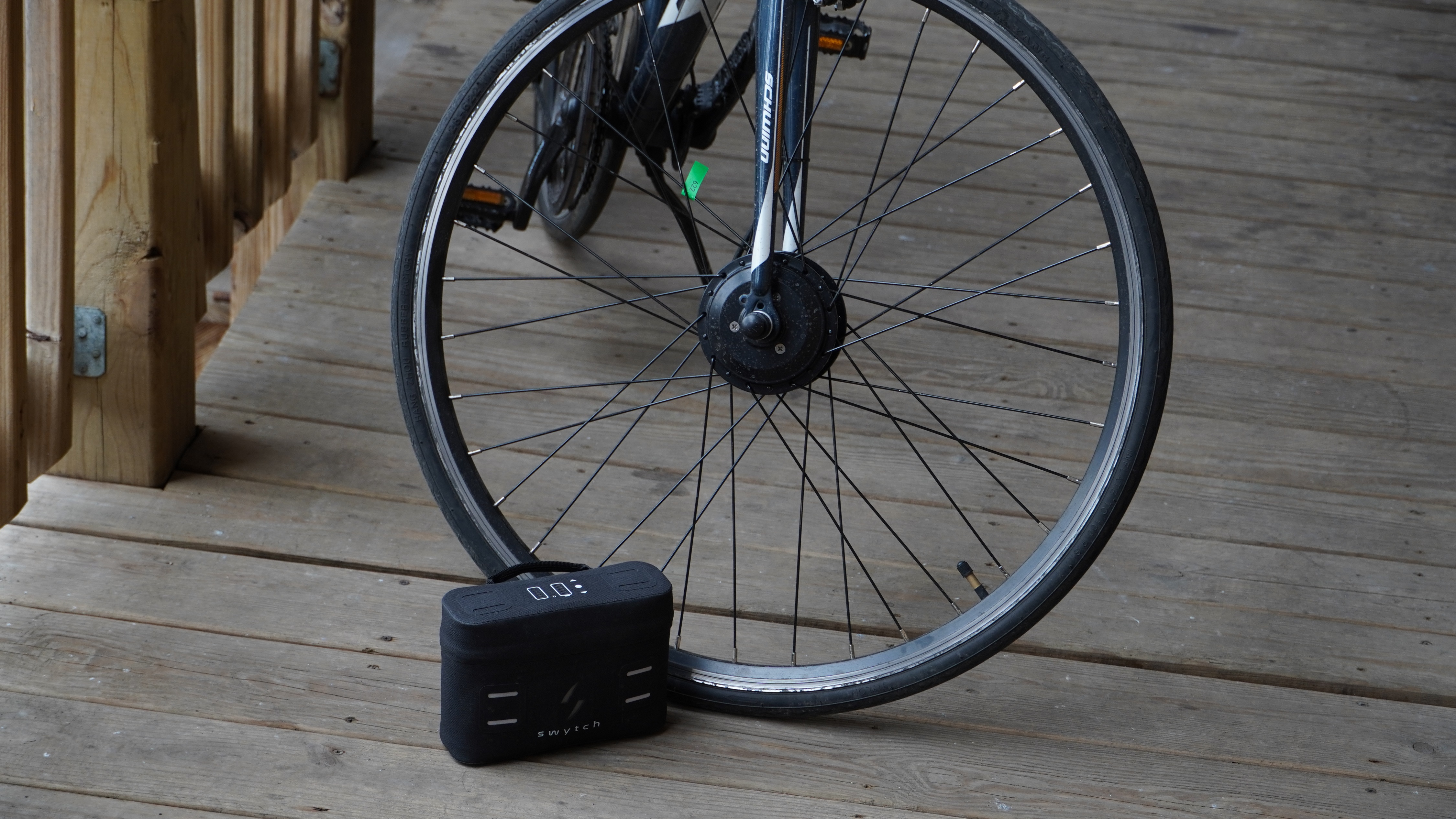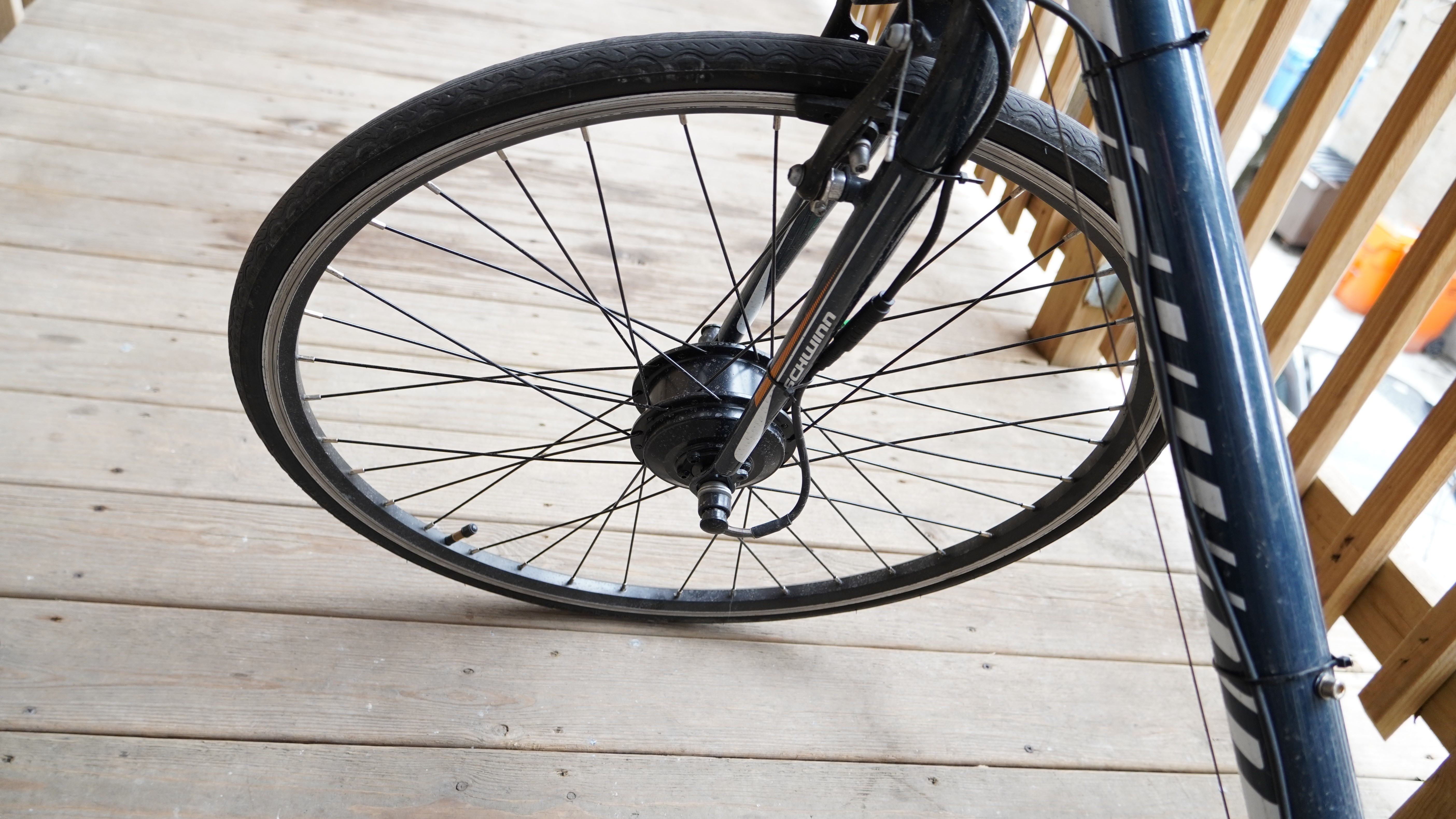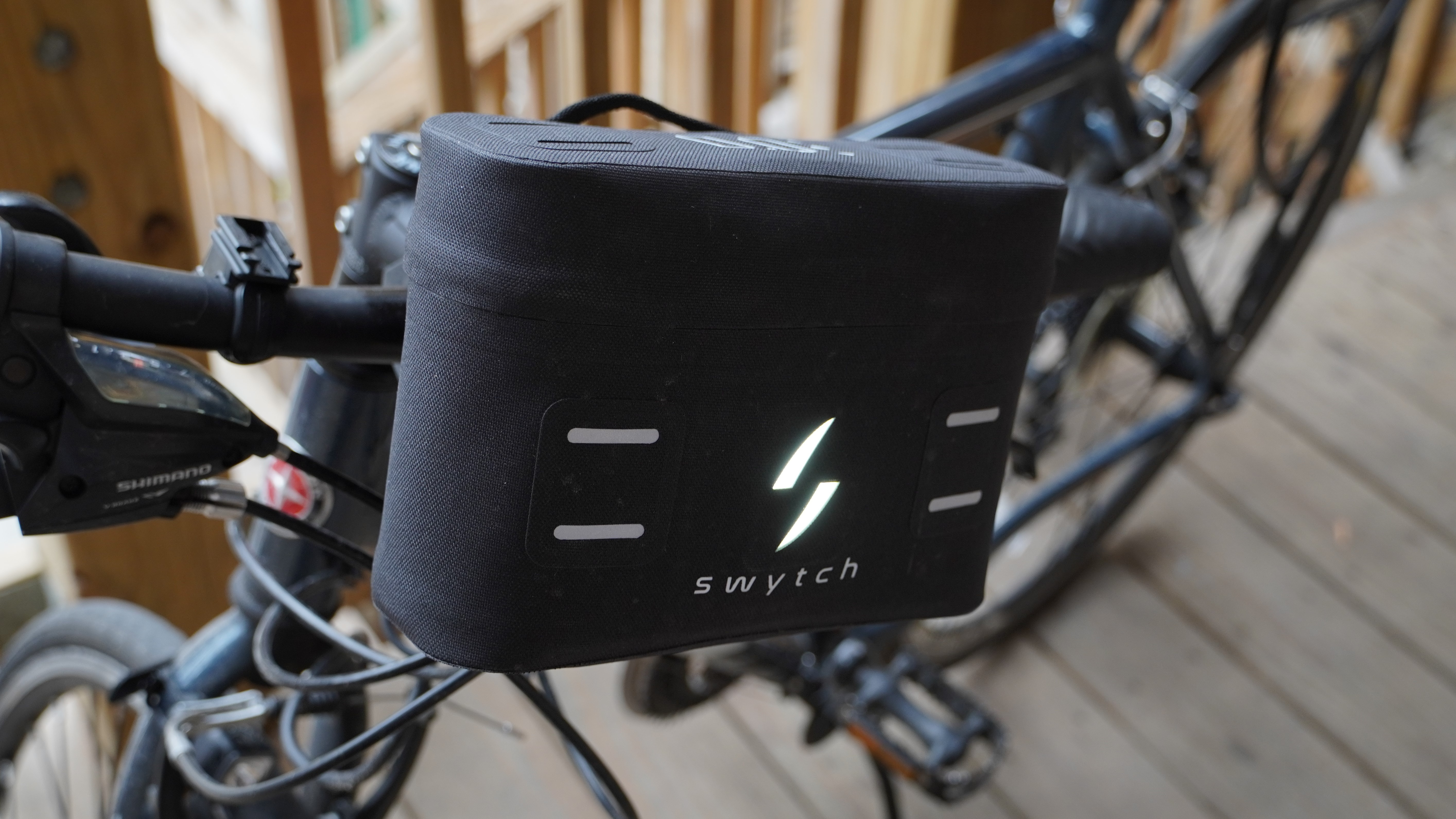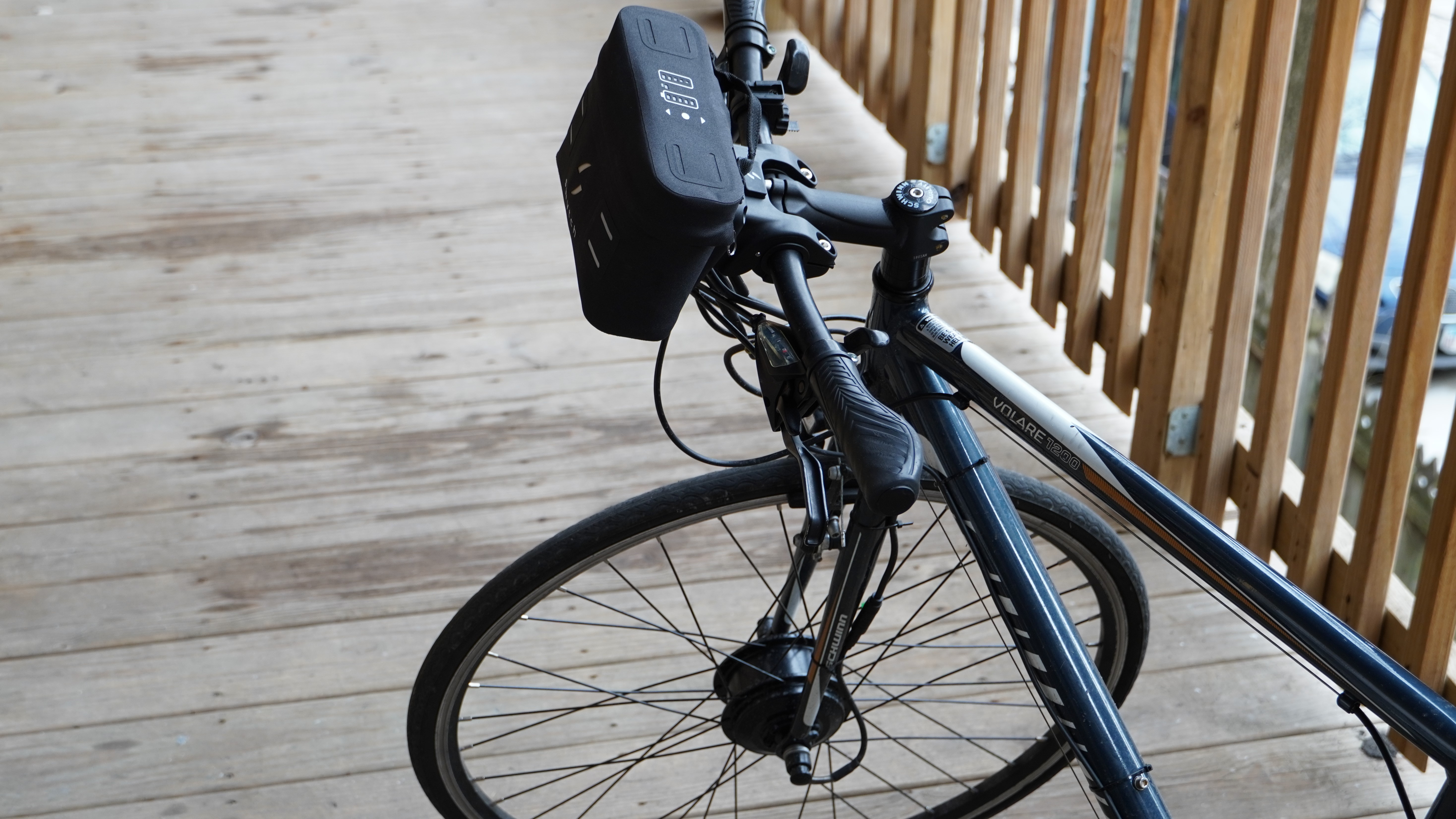Swytch Kit Pro review: a simple conversion if you really love your bike
The Swytch Kit Pro lets you turn a regular bike into an ebike, if you absolutely must

The Swytch Kit simplifies and tidies the process of converting a bike into an e-bike, but the price for a weak motor wheel and a very modest battery is simply too high to compete in the current e-bike market.
-
+
Simplicity of kit
-
+
Customized to match your bike
-
+
Takes the edge off hills and headwind
-
-
Meager assistance
-
-
Steep price even with discount
-
-
No bike included
Why you can trust T3

The market for electric bikes has been abuzz in the past few years, with many new manufacturers cropping up, legacy bike makers introducing electrified models, and even auto industry brands trying their hand at bicycles. But, for those who already own a perfectly serviceable bike, there’s the option to turn it into an ebike. It may seem like a complicated process, but that’s where the Swytch Kit comes in, aiming to turn your bike into a “top quality eBike” with a simple wheel swap, a special battery pack, and a little installation process that even more novice bikers can handle.
Pricing is where things quickly get tricky for the Swytch Kit. The base Eco model costs a whopping £999/$1,199 (roughly AU$1800) to give you about 21 miles of range while the Pro model bumps up to £1249/$1499 (AU$2050) for 31 miles of range.
Swytch regularly offers a huge 50% discount for folks who sign up for the waitlist, though (as the product is regularly sold out). But bear in mind, all of this doesn’t include an actual bike. That’s just for a motorized wheel, a battery pack, mounting equipment, and a cadence sensor.
It helps a little that Swytch does the work of building the wheel to fit your bike. Of course, this leaves you with the task of supplying your own bike (or buying a new one), which presumably would also have wheels that were built to fit it. So, let’s take a deeper dive to see if we can make sense of the Swytch Kit’s proposition to customers.

The battery mounts securely to the handlebars
Swytch Kit - Key Specs
Motor: 250W brushless front hub, geared
Top speed (motorized): 20mph
Power: 36V 7.0Ah (250Wh) Pro Power Pack; (36V 5.0Ah Eco Power Pack)
Control: Cadence-sensor pedal assist (throttle optional)
E-bike classification: Class 1
Brake support: rim or disc
Wheel size: 700Cx28 (as tested), all sizes available
Weight: 7.72 pounds (wheel + battery), 9.2 pounds (fully assembled on bike; will vary)
Range: 31 miles (31.3 tested); (21.7 miles with Eco Power Pack)
SWYTCH KIT PRO REVIEW: DESIGN AND FEATURES
The Swytch Kit is a bit hard to define design-wise. At its heart are two things: a 250W hub motor and a unique battery pack that houses the battery cells and motor controller. The hub motor gets built to the specifications of customers' wheels, a 700x28C wheel with rim brakes in my case, and can therefore come in a few different shapes. By default, it’s an all-silver affair for the hub, spokes, and rim, but it can come in matte black for an additional fee. Note that this doesn’t include a tire or tube.
The wheel ends up being a lot like those on other hub-motor-powered e-bikes I've tested except that it goes onto the front of the bike. It slots into the front dropouts and is held on with nuts while the power connector cable comes out from the axle on the left-hand side. I found the threaded axle gave me trouble fitting only about halfway into the dropouts on two bikes — they’re a little thicker than quick-release skewers — but ultimately they slotted in with a bit of force down on the handlebars. The wheel is nothing too fancy, but that helps it remain quite subtle on the bike, hardly giving away the e-bike nature of the mod.

A discreet motor aside from the thick cabling
The battery pack is a tiny thing in the grand scheme of e-bike batteries. If it were a lunchbox, it would fit little more than a hearty sandwich and a small bag of chips. That’s a blessing and a curse as it makes the battery easy to manage but also means it’s got a limited 250Wh capacity for the premium Pro model and just 180Wh for the Eco model.
Get all the latest news, reviews, deals and buying guides on gorgeous tech, home and active products from the T3 experts
The Swytch Kit’s battery pack is built into a fabric sleeve that’s more water-resistant than it looks (it held up perfectly in about an hour of rainy cycling) and further obscures the fact it’s building into an e-bike. The fabric build does leave the buttons for controlling speed and power a little mushy, and the main power switch (which is only flipped once) proves fussy to reach because of an incredibly firm zipper around the top of the battery pack. The pack has a little carrying handle for convenience as well as front reflectors, and the Pro version includes a built-in 200-lumen headlight.

Visible, but not blinding
The kit includes a mounting bracket that attaches to the handlebars on both sides of the stem. It’s a bit wide and could get in the way of other handlebar attachments. The bracket easily accepts the battery with handy alignment guides, and it locks the battery in place. The battery is easily unlocked with a simple button press, though, meaning it’s just as easy for you to remove this expensive component as it is for a thief. So that battery carrying handle is going to come in handy, because you’ll be taking the battery off everywhere you go if you want to keep it.

With the bracket attached and wheel on, there's a touch of wiring up and cable management to do. The cable from the wheel needs to connect with a wire coming from the battery bracket, and then it should be zip-tied along the fork to keep it from getting into the spokes.
A cadence has to go onto the bottom bracket, with a disc of magnets attaching to one crank arm and spindle and a sensor mounting onto the frame next to it. This bit of the assembly is a bit trickier and the plastic piece that connects to the crank arm is a little less elegant than the rest of the system. Having everything tied down with zip ties also leaves the finished build feeling a little more cobbled together than I’d expect from something priced this high.
The system supports other options, such as throttles and brake sensors, things that are standard on plenty of e-bikes, but these cost extra. Unfortunately, support for those extras means built-in cabling for them whether you want them or not, so that’s even more cables on your bike to tuck away.
Just how much weight the system adds to your bike will depend. The motor and battery weight aren’t variable, but you may be replacing a lightweight rim with a heavier one. The bracket and cabling also add some weight. I swapped out a cheap wheel for the Swytch Kit, and all told the change saw my bike gain 4.2kg (9.2 pounds). This also shifts weight toward the front, which makes the bike a little more finicky about standing upright in my case.
SWYTCH KIT PRO REVIEW: PERFORMANCE
The Swytch Kit is no beast. Its 250W motor isn’t meant to fly at 28mph, and its battery isn’t meant for cross-country tours. What the kit is there to do is offer a bit of assistance to a rider, taking a bit of the edge off of a ride.
Sure enough, I feel the Swytch Kit kicking in as I ride, helping out a bit as I accelerate towards my faster cruising speeds. The best scenario for it has been when I hit a slight hill or some headwind. Here it gives me a little extra power to fight through the added resistance. As much as I welcome it in those moments, I find it lagging leagues behind the other bikes I’ve tested.

Perhaps the least elegant piece of the kit — the cadence sensor is strapped and stuck on to the bottom bracket.
The first fault is in the cadence sensor. I never feel the motor kick in until I’ve made about a rotation and a half with my cranks. When I get moving from a standstill, I’ve already done the hard part before I feel the assist. Once it’s going, the motor does smooth out my acceleration but only up to about 12-14mph. Swytch suggests an upper limit of 20mph for the motor, and I’m a heavier rider at over 220 pounds, so it stands to reason that I’ll get less from the motor, but other 250W systems I’ve tested haven’t fallen so far short of the manufacturer’s listed speeds.
Above 14mph, I can hardly feel the assist coming from the motor. This leaves a small window of speeds that it actually feels like the Swytch Kit is supporting my riding. The bike I tested it on is a factor. It’s admittedly a bit downtrodden, but it’s light and agile enough on its own to comfortably allow some high-teens riding. So the bike the Swytch Kit gets paired with is a huge factor in its ultimate value.

Your old bike with a Swytch Kit is still your old bike in most regards.
Where Swytch succeeds is in its promised range. Perhaps it's a result of the conservative power delivery I experienced, but I rode the Swytch Kit Pro for a full 31 miles before the battery petered out, still showing one bar remaining but offering a negligible assist. And that riding was with the pack set to its maximum assist level.
Now, the Swytch Kit isn’t aiming to be the most monstrous, powerful ebike on the block. But Swytch says it aims to turn a standard bike into a “top quality eBike,” and the long-story-short is that it can’t. E-bikes have simply come too far.
There are subtle ebikes like the Pure Flux One, Ampler Curt, and Ride1Up Roadster V2 that can cruise along on their motors (even up to 24mph with ease on the Roadster) while costing just about as much as the Swytch Kit’s most basic package before any discounts, and these ebikes actually include a bike. Meanwhile, higher-end e-bikes like the Specialized Turbo Vado SL 4.0 leave little room to consider pairing the Swytch Kit with a premium bike as it’ll never match the fit and finish nor the performance.
This leaves just about one sensible avenue for the Swytch Kit to fit in. It can take a bike with sentimental value and make it easier to ride, reducing the challenges of hills, wind, and bike weight on the rider, and avoiding the clutter of owning multiple bikes. For most people, whether coming from a cheap bike or no bike at all, it makes loads more sense to just go straight to something designed from the ground up to be an ebike.

The whole kit is essentially these two items.
SWYTCH KIT PRO REVIEW: VERDICT
The Swytch Kit is an interesting bike accessory that takes a lot of the guesswork out of building an e-bike for those who really want to upgrade a bike they already own. It won’t add enough power to excite or largely benefit seasoned riders, and it’s not terribly sensible for anyone who can make room for a fully packaged e-bike instead. Even at its discounted price, there are alternative kits, eBikeling’s for example, that offer more power for those who don’t mind doing a little more fiddling and research, but sometimes you pay for simplicity.

Mark Knapp has covered tech for most of the past decade, keeping readers up to speed on the latest developments and going hands-on with everything from phones and computers to e-bikes and drones to separate the marketing from the reality. Catch him on Twitter at @Techn0Mark or on T3, PCMag, IGN, TechRadar, Business Insider, and Reviewed.